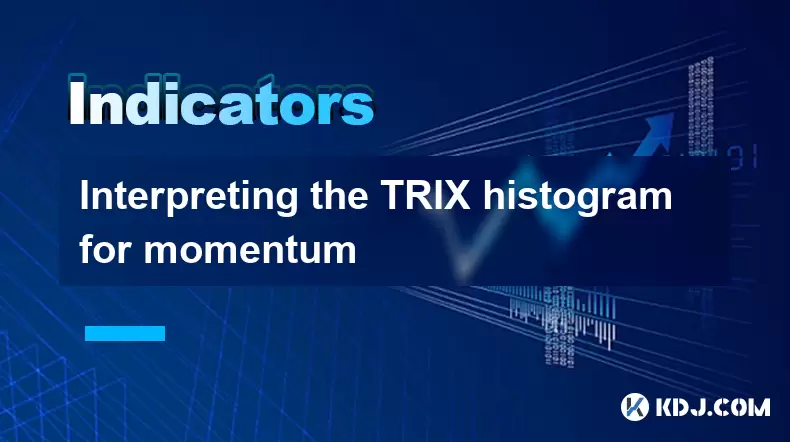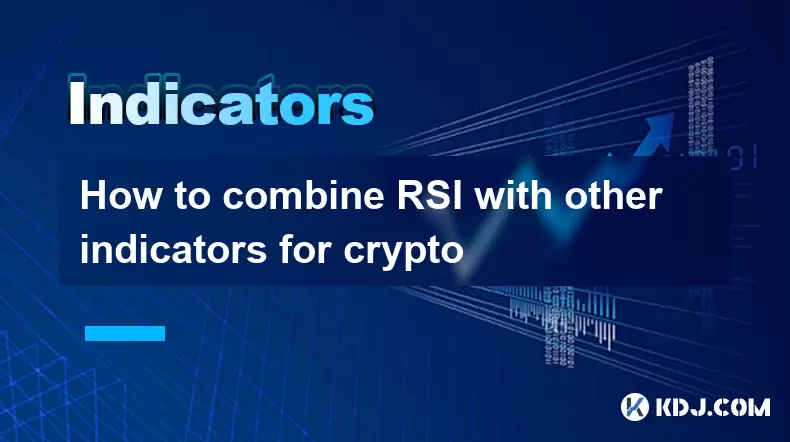-
 Bitcoin
Bitcoin $121,713.8152
3.06% -
 Ethereum
Ethereum $3,041.6437
2.42% -
 XRP
XRP $2.9499
5.12% -
 Tether USDt
Tether USDt $1.0000
-0.02% -
 BNB
BNB $704.1034
1.75% -
 Solana
Solana $166.7523
2.91% -
 USDC
USDC $0.9999
0.00% -
 Dogecoin
Dogecoin $0.2052
2.90% -
 TRON
TRON $0.3011
-0.47% -
 Cardano
Cardano $0.7461
1.42% -
 Hyperliquid
Hyperliquid $48.3650
1.12% -
 Stellar
Stellar $0.4548
3.52% -
 Sui
Sui $3.9527
14.50% -
 Chainlink
Chainlink $16.3300
5.87% -
 Bitcoin Cash
Bitcoin Cash $511.8016
1.25% -
 Hedera
Hedera $0.2395
1.40% -
 Avalanche
Avalanche $21.6526
2.06% -
 UNUS SED LEO
UNUS SED LEO $9.0073
-0.23% -
 Shiba Inu
Shiba Inu $0.0...01369
2.61% -
 Toncoin
Toncoin $3.0335
0.66% -
 Litecoin
Litecoin $96.6206
1.72% -
 Monero
Monero $355.1673
5.35% -
 Polkadot
Polkadot $4.0839
2.47% -
 Uniswap
Uniswap $9.3282
9.72% -
 Dai
Dai $0.9997
-0.01% -
 Ethena USDe
Ethena USDe $1.0004
-0.04% -
 Pepe
Pepe $0.0...01248
1.07% -
 Bitget Token
Bitget Token $4.4642
2.68% -
 Aave
Aave $325.0626
6.81% -
 Bittensor
Bittensor $418.1482
6.22%
Interpreting the TRIX histogram for momentum
The TRIX histogram measures momentum in crypto markets by visualizing the difference between the TRIX line and its signal line, helping traders spot trend reversals and confirm price action.
Jul 14, 2025 at 07:15 pm

What is the TRIX Histogram?
The TRIX (Triple Exponential Average) histogram is a technical analysis indicator used to measure momentum in financial markets, including cryptocurrency. It helps traders identify potential buy or sell signals by analyzing the rate of change in a triple exponentially smoothed moving average. The histogram itself visualizes the difference between the current TRIX value and its signal line, typically a 9-period EMA of the TRIX line.
This momentum-based tool is particularly useful in volatile markets like crypto, where identifying shifts in trend strength and direction can lead to more informed trading decisions. Understanding how the TRIX histogram behaves allows traders to anticipate reversals or confirm ongoing trends.
How Does the TRIX Histogram Work?
The TRIX histogram is derived from three main components:
- TRIX Line: A 14-period (default) triple exponential moving average of price.
- Signal Line: Usually a 9-period EMA of the TRIX line.
- Histogram Bars: Represent the difference between the TRIX line and the signal line.
When the TRIX line crosses above the signal line, the histogram turns positive, indicated by green bars rising above the zero line. Conversely, when the TRIX line falls below the signal line, red bars appear, signaling bearish momentum.
In the context of cryptocurrencies such as Bitcoin or Ethereum, these histogram movements can help spot weakening uptrends or strengthening downtrends. For instance, if the price is rising but the TRIX histogram bars are shrinking, it may indicate waning momentum.
Interpreting Positive and Negative Histogram Bars
The TRIX histogram’s color and height provide key insights into market momentum:
- Green (positive) bars increasing in height suggest accelerating bullish momentum.
- Red (negative) bars growing deeper imply intensifying bearish pressure.
Traders often use this information to time entries or exits. For example, during a rally in Ethereum (ETH), if the TRIX histogram starts to contract despite rising prices, it might signal that the uptrend is losing steam and a pullback could be imminent.
It's important to note that the TRIX histogram should not be used in isolation. Combining it with volume indicators or support/resistance levels can enhance its reliability, especially in fast-moving crypto markets.
Identifying Divergences Using the TRIX Histogram
One of the most powerful applications of the TRIX histogram is detecting divergences between price action and momentum:
- Bullish Divergence: Price makes a lower low, but the TRIX histogram makes a higher low, indicating hidden strength.
- Bearish Divergence: Price hits a higher high, while the TRIX histogram forms a lower high, suggesting weakening momentum.
In the crypto space, these divergences can be early signs of trend reversals. For example, during a rally in Solana (SOL), if the price climbs to a new high but the TRIX histogram fails to surpass its previous peak, this bearish divergence might precede a significant correction.
Spotting these patterns requires careful observation and practice. Traders often zoom in on specific candlestick ranges and compare them visually with the histogram’s behavior to confirm divergence.
Practical Steps to Use the TRIX Histogram in Crypto Trading
To incorporate the TRIX histogram into your trading strategy, follow these steps:
Add the TRIX Indicator to Your Charting Platform
Most platforms like TradingView or Binance allow you to search for "TRIX" in the indicator list. Enable both the TRIX line and the signal line.
Set Default Parameters or Customize Them
While the default settings are usually 14 for the TRIX and 9 for the signal line, some traders adjust them based on volatility. Shorter periods make the indicator more sensitive; longer periods smooth out noise.
Overlay the Histogram
Ensure the histogram view is enabled so you can see the bar chart beneath the TRIX line. This visualization helps in spotting momentum shifts quickly.
Look for Crossovers and Histogram Expansion/Contraction
When the TRIX line crosses above the signal line, look for green histogram bars forming. Watch how their size evolves over time to gauge momentum strength.
Combine with Other Tools
Use the TRIX histogram alongside RSI, MACD, or volume indicators to filter false signals and improve accuracy.
Common Mistakes When Using the TRIX Histogram
Many traders misinterpret the TRIX histogram, especially in highly volatile crypto environments. Here are common pitfalls:
Overreacting to Small Histogram Movements
Not every small green or red bar indicates a trade setup. Wait for clear crossovers or sustained momentum before acting.
Ignoring Market Context
Applying the TRIX histogram without considering broader market conditions—like macro news or exchange-specific events—can lead to poor decisions.
Using It Without Confirmation
Relying solely on the TRIX histogram without confirming with other indicators or price action can result in whipsaws, especially in sideways or choppy markets.
Failing to Adjust Settings for Altcoins
Some altcoins are more volatile than Bitcoin. Using the same parameters across all assets may not yield optimal results.
Avoiding these mistakes involves backtesting and observing how the TRIX histogram behaves under different market scenarios before deploying real capital.
Frequently Asked Questions (FAQs)
Q: Can the TRIX histogram be used on all cryptocurrency pairs?
A: Yes, the TRIX histogram works on any crypto pair available on supported platforms. However, its effectiveness may vary depending on the asset's liquidity and volatility.
Q: Is the TRIX histogram suitable for day trading cryptocurrencies?
A: Absolutely. Many day traders use the TRIX histogram to detect quick momentum shifts and scalp profits off short-term moves.
Q: How does the TRIX histogram differ from the MACD histogram?
A: While both display momentum through histograms, the TRIX histogram uses a triple-smoothed moving average, making it less noisy and more suited for filtering false signals compared to the MACD histogram.
Q: Should I always wait for the histogram to cross zero before taking a trade?
A: Not necessarily. Some traders act on expanding histogram bars even before zero crossings, especially when strong trends are present.
Disclaimer:info@kdj.com
The information provided is not trading advice. kdj.com does not assume any responsibility for any investments made based on the information provided in this article. Cryptocurrencies are highly volatile and it is highly recommended that you invest with caution after thorough research!
If you believe that the content used on this website infringes your copyright, please contact us immediately (info@kdj.com) and we will delete it promptly.
- Bitcoin's Ascent: From Crypto to Valuable Asset Dominating Global Finance
- 2025-07-14 22:30:11
- Bitcoin, Michael Saylor, and the Relentless Pursuit: A Deep Dive
- 2025-07-14 20:50:12
- BONK's Wild Ride: Grayscale Buzz and Volume Spike - What's Next?
- 2025-07-14 21:10:46
- Week Review, July 7-13, Highlights: Crypto Market Surges to New Heights
- 2025-07-14 21:10:46
- Pi Network's Price Puzzle: Stability Amid Altcoin Recovery – What's Next?
- 2025-07-14 21:17:24
- ADA Eyes $1.90, HBAR & ONDO: Bullish Breakouts on the Horizon?
- 2025-07-14 21:30:11
Related knowledge

Advanced RSI strategies for crypto
Jul 13,2025 at 11:01am
Understanding the Basics of RSI in Cryptocurrency TradingThe Relative Strength Index (RSI) is a momentum oscillator used to measure the speed and chan...

Crypto RSI for day trading
Jul 12,2025 at 11:14am
Understanding RSI in the Context of Cryptocurrency TradingThe Relative Strength Index (RSI) is a momentum oscillator used to measure the speed and cha...

Crypto RSI for scalping
Jul 12,2025 at 11:00pm
Understanding RSI in the Context of Crypto TradingThe Relative Strength Index (RSI) is a momentum oscillator widely used by traders to measure the spe...

What does an RSI of 70 mean in crypto
Jul 13,2025 at 06:07pm
Understanding the RSI Indicator in Cryptocurrency TradingThe Relative Strength Index (RSI) is a widely used technical analysis tool that helps traders...

How to avoid RSI false signals in crypto
Jul 13,2025 at 06:21pm
Understanding RSI and Its Role in Crypto TradingThe Relative Strength Index (RSI) is a momentum oscillator used to measure the speed and change of pri...

How to combine RSI with other indicators for crypto
Jul 12,2025 at 08:35am
Understanding the Role of RSI in Crypto TradingThe Relative Strength Index (RSI) is a momentum oscillator that measures the speed and change of price ...

Advanced RSI strategies for crypto
Jul 13,2025 at 11:01am
Understanding the Basics of RSI in Cryptocurrency TradingThe Relative Strength Index (RSI) is a momentum oscillator used to measure the speed and chan...

Crypto RSI for day trading
Jul 12,2025 at 11:14am
Understanding RSI in the Context of Cryptocurrency TradingThe Relative Strength Index (RSI) is a momentum oscillator used to measure the speed and cha...

Crypto RSI for scalping
Jul 12,2025 at 11:00pm
Understanding RSI in the Context of Crypto TradingThe Relative Strength Index (RSI) is a momentum oscillator widely used by traders to measure the spe...

What does an RSI of 70 mean in crypto
Jul 13,2025 at 06:07pm
Understanding the RSI Indicator in Cryptocurrency TradingThe Relative Strength Index (RSI) is a widely used technical analysis tool that helps traders...

How to avoid RSI false signals in crypto
Jul 13,2025 at 06:21pm
Understanding RSI and Its Role in Crypto TradingThe Relative Strength Index (RSI) is a momentum oscillator used to measure the speed and change of pri...

How to combine RSI with other indicators for crypto
Jul 12,2025 at 08:35am
Understanding the Role of RSI in Crypto TradingThe Relative Strength Index (RSI) is a momentum oscillator that measures the speed and change of price ...
See all articles

























































































